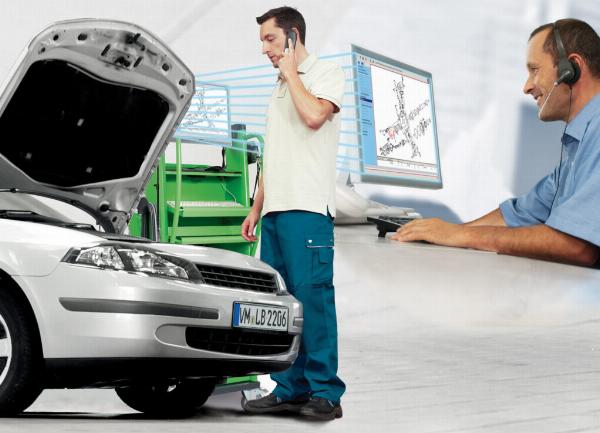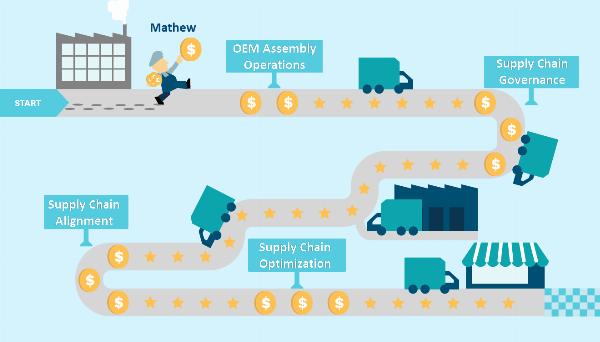 DA 50+ Guest Posts – Get Featured on Real Authority Blogs!
DA 50+ Guest Posts – Get Featured on Real Authority Blogs!
Faster Repair Resolution Through Knowledge Base Search
Written by Robert Wilson » Updated on: June 17th, 2025

Delays in repair can affect production significantly, hampering customer satisfaction and retention. To solve this issue, a common knowledge base is provided to technicians as well as dealers to identify problems based on similar symptoms.
Not all knowledge bases are user-friendly, and flipping through multiple pages or PDFs is not practical when it comes to managing downtime. Through this blog, let's examine the practical use of the knowledge base, how it impacts the performance of OEMs and dealers in the aftermarket, and how it can improve the quality of service.
What Is Knowledge Base Search?
A knowledge base search is an interface through which technicians can easily retrieve specific information from a collection of documents, manuals, and guides. In the aftermarket, it has been crucial for the repair process because technicians can find accurate solutions without investing too much time in diagnosing.
Optimized with AI-driven features such as smart indexing and natural language processing, the search function becomes more intuitive, faster, and more accurate than others. It helps lower repair time, decreases error levels, and generally makes things more efficient, which yields better outcomes for OEMs and their customers.
What is The Role of a Knowledge Base in Repair Solutions?
A knowledge base is a consolidated directory of essential information, from technical documents to service manuals and troubleshooting guides. For the repair ecosystem, it is an important element that allows instant access to data by the technician and is therefore streamlined for the repair process.
1. Faster Decision Making:
Its importance for OEMs is high, as this allows them to make quicker decisions, as technicians will get what they want quickly without having to depend on delays due to researching from one source to another.
2. Reduced Downtime:
Easy access to repair documents would ensure that problems were resolved as quickly as possible, thus reducing the time equipment was kept offline.
3. Better Service Quality:
Improving service quality results because improved information leads to more accurate and consistent repairs.
Challenges Faced Due to Traditional Knowledge Base Search
Challenges OEMs experience with these conventional knowledge base search systems include:
1. Slow Results:
Old systems might not provide an efficient indexing process, thus making searches quite slow. Technicians will have to dig through disorganized data to find any relevant documents or repair manuals that might be needed for repair. This becomes very time-consuming. Inefficiency delays access to vital information and hence the repair time as well, thus disrupting workflow and effectiveness in the entire operation.
2. Relevant Information:
Under optimized systems, it is really difficult for the technicians to find almost instantly any right answers due to outdated or irrelevant information. It increases the delay in finding the appropriate solution as it makes technicians go through redundant data. The technique may fail to solve problems within the expected time frame, affecting repair efficiency and service quality.
3. Poor Indexing and Categorization:
Inadequate metadata and improper categorization cause poor search results in systems containing knowledge bases. Unindexed documents and guides are not found in an organized manner. Therefore, the needed information cannot be easily located by technicians in due time. Such complications affect the search process, creating delays and inefficiency as technicians scrabble through a sea of disorganized data to find the information they need.
4. Increased Searching Time:
Too much effort wasted by the technicians filtering through non-relevant information due to an inefficient knowledge base increases the time spent in search. Delayed access to vital repair documents and instructions would thus increase equipment downtime. Prolonged search processes extend both the repair period and operational workflow interruption, hence affecting productivity and service quality.
5. Technicians Frustration:
Technicians often get frustrated owing to continuous stoppages and inefficiencies in accessing important information. This dissatisfaction affects the morale of the technicians, reduces productivity, and increases challenges and delays, which hinder proper working efficiency and task effectiveness.
How Can OEMs Increase Efficiency with Knowledge Base Systems?
OEMs can significantly improve their productivity by using an internal knowledge base software solution that easily provides them with the right information required for repairs. Here's how:
1. More Rapid Information Access
By storing all technical manuals, repair guides, and troubleshooting documents in an organized manner in their knowledge bases, OEMs ensure all technicians get quick access to the information they require. Effective search features enable the technicians to derive solutions quickly because they waste minimal amounts of time searching for solutions. Processes, therefore, about repair become faster.
2. Breaking Up Guides:
It is essential to ensure that your guides do not have information buried deep inside the content or instructions. Make sure that the information required or demanded by the user can be found easily. For this, you must split the long pieces of information into smaller articles and address specific questions within them.
3. More Accurate, Less Error-Prone-Free
A well-structured knowledge base reduces the usage of outdated or wrong information. Metadata tagging coupled with updated documentation allows technicians to use correct data and, in turn, decrease errors in repair.
4. Reduced Downtime
For manufacturers, quick access to reliable data can help them reduce the downtime of repair processes. This is about less time spent trying to find information, faster issue resolution, and fewer interruptions in operations.
5. Proactive Repair Suggestions
Knowledge base software solutions learn from their previous searches through machine learning and predict upcoming queries to proactively provide suggestions to the user. Apart from that, automation tools like chatbots and virtual assistants help to aid the repair teams by instantly offering the needed solution, troubleshooting procedures, or even repair manuals.
In Conclusion
Optimized search systems in knowledge bases may well signal the beginning of streamlined repair processes and operational efficiency. This blog touches on how conventional knowledge bases, replete with slow query results, irrelevant information, and poor indexing, are gradually becoming quite a challenge for OEMs.
The OEMs might help overcome such issues by implementing current AI technologies like natural language processing and machine learning into their searches to make the searches more accurate and speedy.
OEMs and dealers have been actively investing in efficient knowledge management systems that allow easy access to critical repair information, reduce downtime and mistakes involved, and thus expedite repairs and raise service quality.
Summing them as optimizing measures allows OEMs to increase productivity, minimize disruptions within the operations structure, and enhance customer satisfaction and indeed offers reason enough to invest in better knowledge management solutions.
Note: IndiBlogHub features both user-submitted and editorial content. We do not verify third-party contributions. Read our Disclaimer and Privacy Policyfor details.
Copyright © 2019-2025 IndiBlogHub.com. All rights reserved. Hosted on DigitalOcean for fast, reliable performance.

















